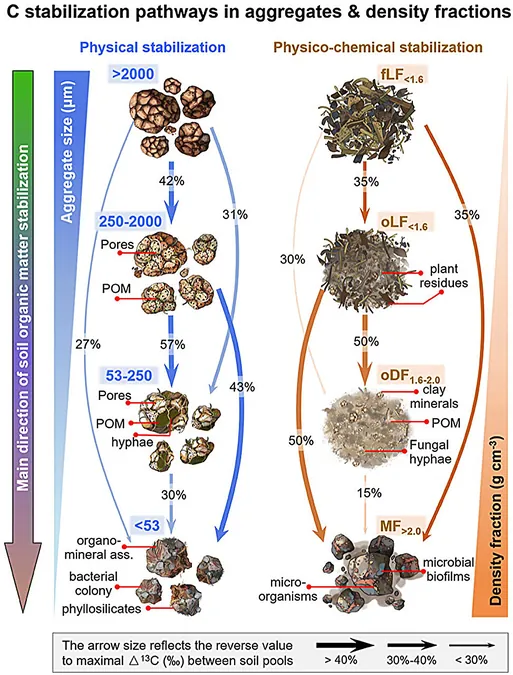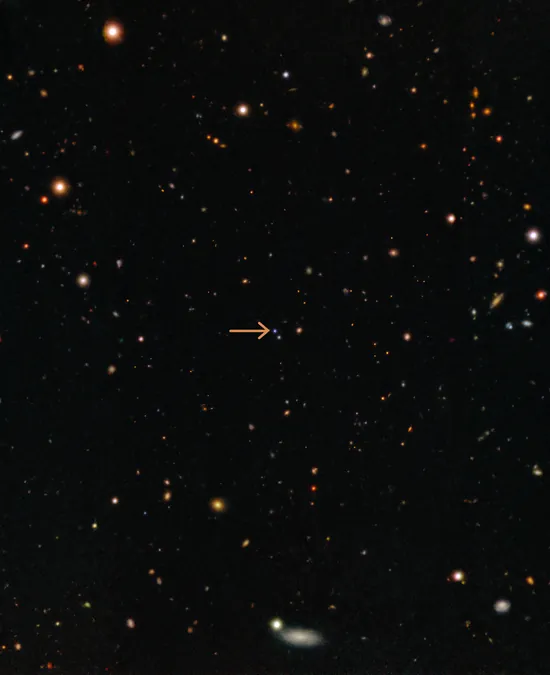
Unlocking the Secrets of Soil Carbon: The Game-Changing Role of Mineral-Associated Organic Matter
2025-06-27
Author: Rajesh
Revolutionary Insights into Soil Carbon Stability
A groundbreaking global study has unveiled that mineral-associated organic matter (MAOM) stands out as the most stable long-term carbon reservoir in a variety of ecosystems. This pivotal research shines a spotlight on the complex journey of carbon within soils and its stabilization mechanisms.
Digging Deeper into Soil Organic Matter
Soil organic matter (SOM) plays an essential role in nurturing soil fertility, structure, and carbon storage, despite constituting a mere fraction of the soil's mass. Comprising decomposed plant and animal remains, microbial cells, and their by-products, SOM is often safeguarded from decomposition by various soil components. However, the pathways through which SOM transforms across different soil aggregates have remained largely underexplored.
A Global Analysis Led by Experts
Under the leadership of Dr. Sun Tao from the Institute of Applied Ecology, Chinese Academy of Sciences, researchers delved into existing global datasets using the stable carbon isotope ¹³C. By investigating the differences in ¹³C content across various soil aggregate sizes and densities, they meticulously decoded the intensity of microbial processing and the stability of organic matter in carbon pools worldwide.
Fascinating Findings on Microbial Processing
The results were illuminating: as aggregate size shrank and particle density increased, the ¹³C values soared, indicating heightened microbial processing and chemical stabilization. Most importantly, MAOM consistently showcased the highest ¹³C enrichment, solidifying its status as the most chemically stable and microbially processed form of SOM globally.
Land Use and Climate: Key Players in SOM Transformation
The study also highlighted that SOM transformation varied with land use types. Forests and grasslands displayed elevated ¹³C values, while croplands had lower values, likely due to increased soil disturbances. Climate patterns further influenced these dynamics—humid tropical regions exhibited the highest ¹³C enrichment, while Mediterranean climates lagged behind, underscoring how temperature and moisture affect microbial decomposition.
The Impact of Soil Chemistry and Management Practices
Notably, soil pH and clay content surfaced as critical moderators of microbial activity and SOM transformation. Coupled with land management practices, these factors command attention in the quest to enhance soil carbon sequestration.
Strategic Recommendations for Carbon Sequestration
The researchers urge the adoption of tailored land-use strategies to maximize the conversion of plant litter into stable carbon forms. For instance, implementing conservation tillage and straw return in temperate croplands can foster MAOM formation. Meanwhile, maintaining perennial vegetation in arid grasslands and enhancing soil moisture can significantly enhance carbon protection. Additionally, adjusting tree species and optimizing litter quality in managed forests can boost microbial efficiency and MAOM accumulation—crucial steps for bolstering soil resilience and carbon storage amidst climate change.



 Brasil (PT)
Brasil (PT)
 Canada (EN)
Canada (EN)
 Chile (ES)
Chile (ES)
 Česko (CS)
Česko (CS)
 대한민국 (KO)
대한민국 (KO)
 España (ES)
España (ES)
 France (FR)
France (FR)
 Hong Kong (EN)
Hong Kong (EN)
 Italia (IT)
Italia (IT)
 日本 (JA)
日本 (JA)
 Magyarország (HU)
Magyarország (HU)
 Norge (NO)
Norge (NO)
 Polska (PL)
Polska (PL)
 Schweiz (DE)
Schweiz (DE)
 Singapore (EN)
Singapore (EN)
 Sverige (SV)
Sverige (SV)
 Suomi (FI)
Suomi (FI)
 Türkiye (TR)
Türkiye (TR)
 الإمارات العربية المتحدة (AR)
الإمارات العربية المتحدة (AR)